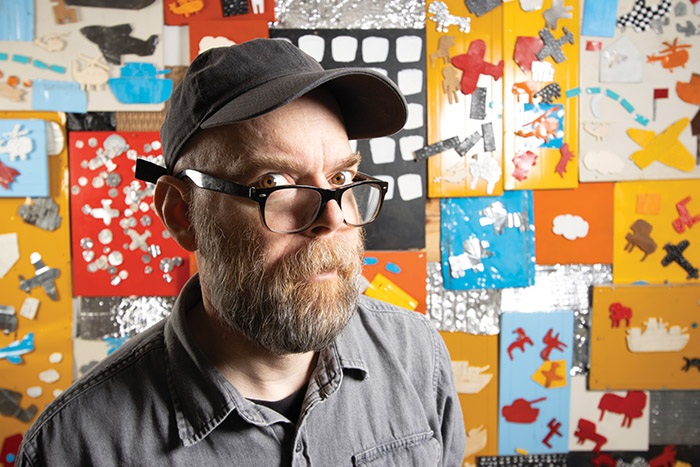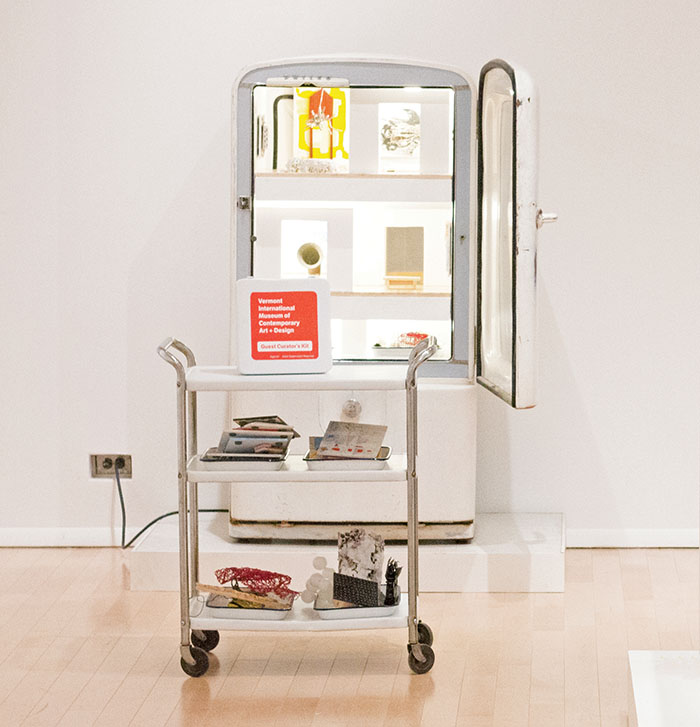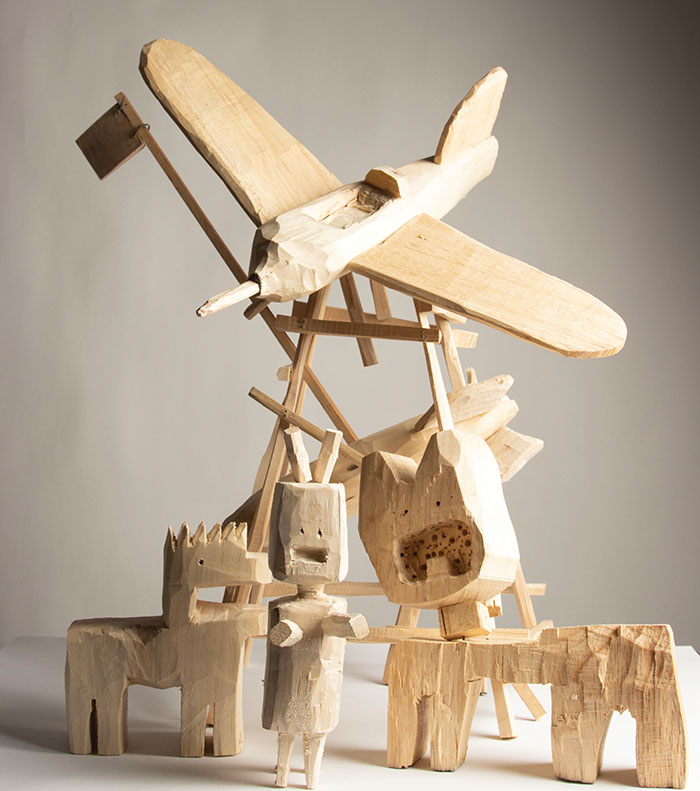Studio Visit: Matt Neckers
Tucked on a mountain in the wilds of Eden, VT sits the home and studio of one of New England’s most idiosyncratic artists, Matt Neckers. Vermont is known for harboring creative thinkers in places that are difficult for crowds to get to, which can be beneficial for fostering an artist’s unique vision unadulterated by critical commentary from the authoritative voice of pundits. Not that Neckers is an escapist. He teaches art and design at Green Mountain Technology and Career Center and much of his work is interactive, dependent on engaging a curious and thoughtful audience outside the mainstream of informed museumgoers.

Neckers and his wife moved from Brooklyn to Vermont in 2003 in search of more affordable space to raise a family and house his eclectic assortment of detritus collected from streets and dumpsters that forms the raw material for his sculpture, installations, and photography. They bought an 1880s farmhouse on 13 acres bordering on 100 acres of protected land in the idyllically named town of Eden. The town had no zoning laws to speak of, making it easier for any future building on the property. The downside was the defunct asbestos mine which they later discovered located not far away on the Eden town line. Given his penchant for irony, this landscape has proven to be the perfect foil for the dark humor that threads its way through Neckers’ entire oeuvre.
Born in Michigan in 1970, Neckers was influenced by the reverberations from the first moon landing. Alexander Calder’s La Grande Vitesse, (1969) a giant, red/orange stabile dominated the city of Grand Rapids and for Neckers, “it was just something that was always there, like a giant piece of furniture.” Neckers has an affinity with Calder’s playfulness as well as the barely controlled chaos that was Calder’s preferred studio environment. What appears as chaos to the casual observer, to Neckers is the rich, fertile soil of a creative mind.
Initially, a small converted garage served as his studio. It soon proved to be inadequate. Using his ingenuity and sweat equity, Neckers erected a 24′ x 32′ two-story barn-like space with 12′ ceilings. He now has a studio equipped to hold all the flotsam and jetsam needed to inspire him. No stranger to physical labor he, had worked as a ranch hand in Olympia, WA when he was in his 20s. His interest in both the construction and deconstruction of things is evident in his artwork.

Playing with scale is one of the tools Neckers employs to great effect. Scale plays a pivotal role in his widely acclaimed Vermont International Museum of Contemporary Art + Design. This mobile interactive museum, along with miniature facsimiles of high-end pieces of art, is all housed in a 1960s-era camper that Neckers hauled down from a mountain in Montgomery, VT. He spent over a year refurbishing what was a former home to chipmunks and racoons into a tongue-in-cheek poke at the most pompous elements of the contemporary art world. Using humor and miniatures, Neckers launched a subversive challenge to the gatekeepers in charge of identifying who is an artist and what qualifies as art. In a related work, Neckers converted a 1940s refrigerator into an interactive mini museum, one of the most popular installations in the 2019 exhibition Small Worlds: Miniatures in Contemporary Art at the Fleming Museum, Burlington, VT.
Shifting perspectives, his life-sized red rocket, like the one included in 2011 in Exposed, an outdoor sculpture exhibition at Helen Day Art Center, Stowe, VT, is reminiscent of a Sputnik-era space toy. When reconfigured at the Kent Museum in 2019 as a potentially lethal, 400-pound silver missile leftover from some previous conflagration, the rocket takes on a far more sinister meaning.

Neckers prefers working in artificial light and often employs incandescent light as an element in his installations. In January 2021, four truckloads of artwork from his studio were hauled down the road to the Vermont Studio Center where Neckers installed Cataclysm: Familiar Robots and Their Animal Kindred, at the Red Mill Gallery. The exhibition was lit 24/7 until the end of March, making it viewable through street facing walls of glass, even when driving by at night.
At the start of COVID, Neckers found inspiration in a pile of wood scraps. They became fodder for his commitment to carve a creature a day. These disconcerting critters, more macabre than cute, found their way into the appropriately titled exhibition Misfits, at Pulp, a gallery in Holyoke, MA. Undaunted by chaos, Neckers rises above it. He is planning Ascension, a solo exhibition at Julian Scott Memorial Gallery, Northern Vermont University, for late 2021.
